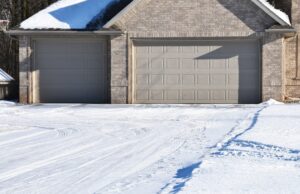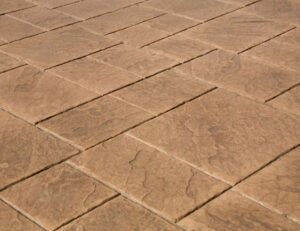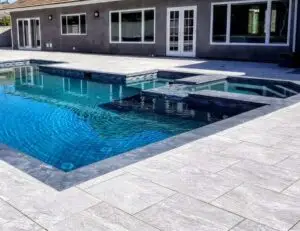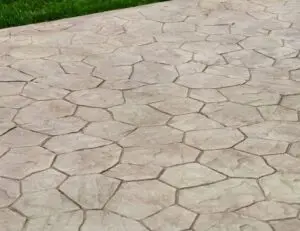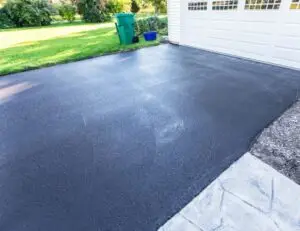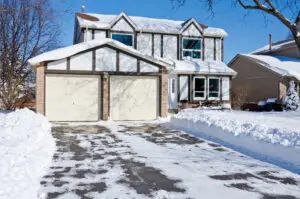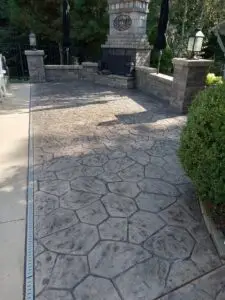Concrete is known for its durability and strength, which is why it’s a go-to material for driveways, patios, sidewalks, foundations, and more. However, despite its toughness, concrete can crack over time. Whether you’ve noticed a few cracks already or are worried about future damage, understanding why concrete cracks and how you can prevent it will help keep your surfaces looking great for years to come.
In this post, we’ll explain why concrete cracks, what factors contribute to it, and practical steps you can take to minimize the risk and extend the lifespan of your concrete surfaces.
Why Does Concrete Crack?
Concrete is a mixture of cement, water, sand, and aggregate (stones or gravel), which hardens over time. While it’s a strong material, it’s not immune to stress, temperature changes, or settling. Here are the most common reasons concrete cracks:
Shrinkage
As concrete cures, it undergoes a natural drying process. During this time, the concrete shrinks slightly, which can cause tiny fissures to form. If the concrete is poured in thick sections without proper control joints, this shrinkage can lead to cracks over a larger area.Settling and Soil Movement
Concrete is only as stable as the ground beneath it. If the soil underneath your driveway or patio shifts due to moisture, freeze-thaw cycles, or poor compaction, it can cause the concrete to settle unevenly and crack.Temperature Changes (Thermal Cracking)
Concrete expands and contracts with fluctuations in temperature. Extreme heat, cold, or rapid temperature changes can put stress on the concrete, leading to cracks—especially if the concrete has not been properly cured or if it was poured too quickly in hot weather.Heavy Loads and Impact
When subjected to heavy loads (like vehicles on a driveway or large equipment on a slab), concrete can crack under the pressure. Likewise, impacts from sharp or heavy objects can leave permanent cracks in the surface.Improper Mix or Installation
A poorly mixed batch of concrete or improper installation can lead to weak points in the surface, making it more susceptible to cracking. For instance, using too much water in the mix can result in a weaker surface, while lack of reinforcement (such as steel rebar or wire mesh) can increase the risk of cracking.
How Can You Prevent Concrete Cracks?
While some degree of cracking is inevitable due to the natural settling and curing process, there are several steps you can take to minimize the risk of cracks and keep your concrete in tip-top shape for longer.
1. Properly Prepare the Ground
The foundation of your concrete project is key to preventing cracking. Properly prepare the soil beneath your concrete by:
- Compacting the soil to prevent settling.
- Adding a gravel base to promote drainage and provide a stable foundation.
- Leveling the area to ensure even weight distribution.
2. Use Reinforcement
Reinforcing concrete with steel rebar, wire mesh, or fiber reinforcement can help absorb tensile stress and prevent cracking. Reinforcement helps the concrete hold together under pressure and strain, reducing the likelihood of visible cracks.
3. Install Control Joints
Control joints are strategically placed lines in the concrete that allow it to expand and contract without forming random cracks. These joints should be cut into the concrete while it’s still fresh—usually within the first few hours after pouring. They can be filled with a sealant to protect against water penetration.
4. Proper Curing
Curing is the process of maintaining moisture in freshly poured concrete to allow it to harden and gain strength. Curing properly (usually for at least 7 days) prevents the concrete from drying out too quickly and forming cracks. In hot or windy weather, it’s especially important to keep the concrete moist using wet burlap, plastic sheeting, or a curing compound.
5. Use Concrete Sealer
Applying a high-quality concrete sealer can protect the surface from moisture, freeze-thaw cycles, and environmental damage. Sealing helps prevent the concrete from absorbing water, which is a common cause of cracks in cold weather when water freezes and expands within the concrete.
6. Avoid Heavy Loads Too Soon
After your concrete is poured, give it enough time to cure and harden before subjecting it to heavy loads, such as vehicles or large furniture. It’s generally recommended to wait at least 7 days before driving on a new driveway or parking slab to avoid compressing the material while it’s still setting.
7. Monitor for Signs of Settling
Keep an eye on the concrete after installation for any signs of settling or shifting. Uneven surfaces or sinking sectionsare often signs that the underlying soil has moved. If you notice this, it’s important to address it early to prevent further damage. Concrete leveling or slab jacking can be used to fill voids and raise settled concrete.
8. Consider Concrete Mix and Additives
The quality of your concrete mix plays a big role in its performance. A high-strength mix can withstand more stress and is less prone to cracking. In addition, certain additives (like plasticizers) can improve the workability of concrete, reduce water content, and increase the final strength.
What to Do if Concrete Cracks?
Despite your best efforts, concrete may crack over time. If you notice small cracks, don’t panic! Here are some simple fixes:
- Small Surface Cracks: Use a crack filler or caulk designed for concrete. After cleaning the crack, apply the filler and smooth it with a putty knife.
- Larger Cracks: For more significant damage, you may need to patch the area with a concrete repair product or hire a professional to perform more extensive repairs.
- Resurfacing: If your concrete surface is generally worn but not severely cracked, resurfacing might be an option. This involves applying a thin layer of new concrete to the surface, restoring its appearance and structural integrity.
While concrete is known for its strength, proper installation and maintenance are key to ensuring it remains crack-free and durable for years to come. Whether you’re looking to pour a new driveway, repair an existing patio, or resurface your concrete surfaces, Fortis Concrete is here to help.
Our team of experienced professionals specializes in high-quality concrete installation and repair, using only the best materials and techniques to minimize cracking and ensure long-lasting results. From proper site preparation and reinforcement to expert sealing and finishing, we take every step necessary to protect your concrete investment.
If you’re dealing with cracks in your existing concrete or planning a new project, Fortis offers expert advice and reliable solutions tailored to your needs. Contact us today to schedule a consultation and find out how we can help you achieve the perfect, durable concrete surfaces for your home or business. Let us put our expertise to work for you!


